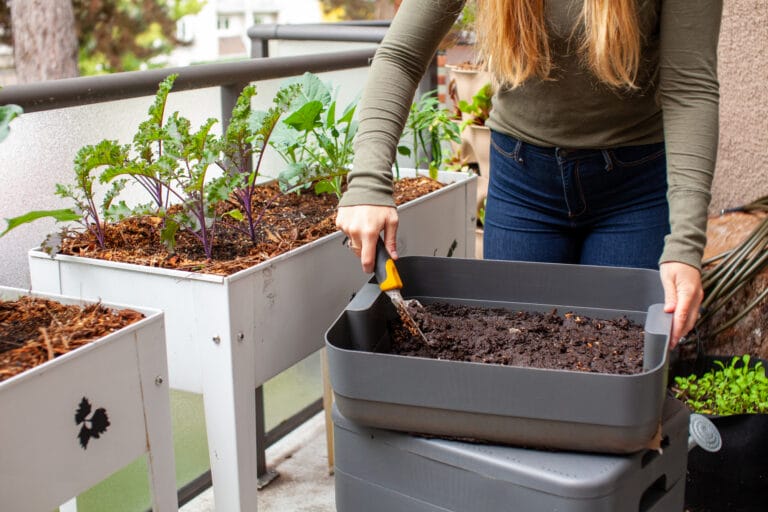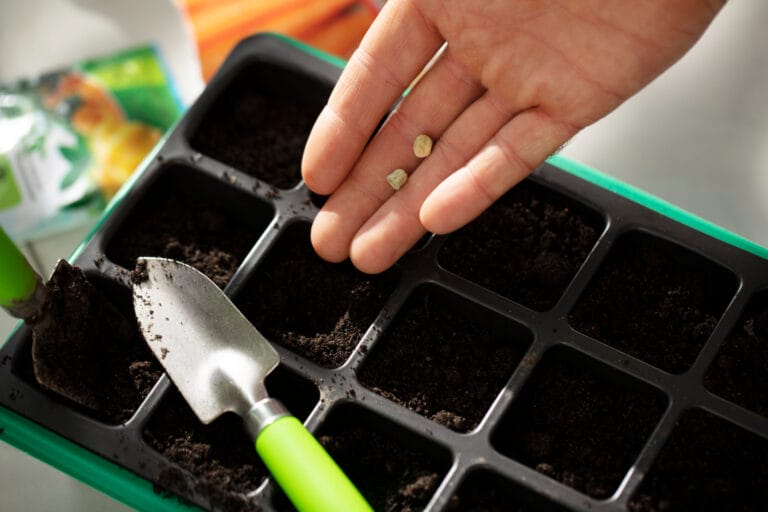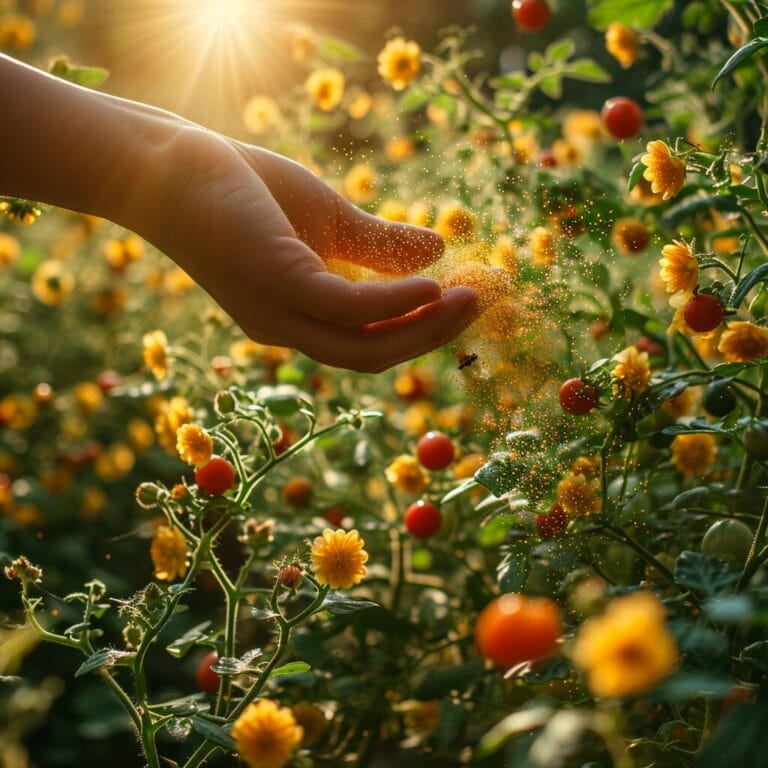Plunge into the intriguing world of indoor trailing plants and vines, turning your residence into a green indoor haven. For city dwellers, these ascending marvels give you a refreshing connection to nature, irrespective of your metropolitan location.
Picture enchanting Golden Pothos brightening your living space or delicate tendrils of a String of Hearts enhancing your study nook with a touch of elegance.
Beyond their captivating beauty, these sprawling indoor hanging vines function as natural air purifiers and humidifiers. They effortlessly absorb toxins and emit clean air, enhancing humidity levels, which can alleviate respiratory discomfort.
Prominently among them, the Hoya carnosa catches the eye with its long vines adorned by glossy, waxy leaves, making it a true showstopper. So, are you ready? Let’s introduce some green magic to your haven with these adaptable long vine plants.
Dive in with us as we explore the exhilarating journey towards achieving a greener living space!
Key Takeaways
- Indoor vine plants such as Golden Pothos and Heartleaf Philodendron enhance your home aesthetics and purify indoor air.
- Consider factors like light requirements, watering needs, growth habits, and maintenance levels while choosing vine plants.
- Golden Pothos thrives in low to bright indirect light, requires well-draining or permeable soil, and needs regular pruning.
- Heartleaf Philodendron is particularly suitable for beginners due to its easy-care nature.
- Other popular choices include String of Pearls, Hoya Carnosa, Arrowhead Foliage, String of Hearts, Spiderwort, English Ivy, and Betel Leaf Plant.
Why Indoor Long Vine Plants Enhance Your Home?
Indoor vine plants serve more than a mere decorative purpose – they purify the air and balance interior humidity. Plants like pothos and philodendrons absorb harmful toxins, replacing them with fresh oxygen. These climbers also maintain ambient moisture levels, which is useful during sweltering summer months or dry winter seasons.
These plants, with their verdant leaves and sprawling vines, add aesthetic beauty to any space. Their various shapes and sizes, from heart-shaped leaves to vibrant color stains, make each plant unique.
Also, these climbers are generally easy to care for, deeming them the perfect addition to a busy household or for indoor gardening beginners.
See in actual how to care for vine plants indoors in this video.
Choosing the Right Indoor Vine Plant: Considerations
Before introducing indoor creeper vines to your home, some factors warrant consideration. These include the plant’s light requirements, watering needs, growth habits, and maintenance levels.
Taking these elements into account helps to select a vine plant that’ll flourish in your space. Have trouble choosing indoor houseplants? Let this video guide you.
Light Requirements
Light provisions greatly affect each vine plant’s growth. Some plants favor bright indirect light, while some fare well with medium indirect light. For instance, Pothos and Heartleaf Philodendron flourish in low to bright indirect light.
However, guesstimates don’t work in successful plant growth. For healthy growth and vibrant foliage, understanding each plant’s specific lighting needs is crucial.
Watering Needs
Overwatering in-house vine plants leads to root rot – a common pitfall in house plant gardening. Let the top inch of soil dry out before the next watering session. This ensures your plant’s good health and happiness.
Additionally, adjust watering schedules based on the soil’s dampness. Consider pots with drain holes and utilizing permeable soil to limit water retention at the roots.
Growth Habit
Vine plants’ growth habits vary. Some are trailing, like Golden Pothos and Heartleaf Philodendron, possessing lengthy vines that gracefully droop from hanging baskets or shelves.
Climbing plants, like Hoya Carnosa and Swiss Cheese Plant, use aerial roots to grip onto trellises or walls for vertical growth. Other plants, like Arrowhead Foliage and Spiderwort, grow runners that spread horizontally.
These unique growth characteristics make indoor creeper vines versatile for home decoration.
Maintenance Level
Consider the maintenance level of vine plants when choosing them for indoor gardening. Some might demand more care than others. For time-strapped or novice plant parents, low-maintenance vine plants are ideal.
These plants flourish under minimal care, perfect for busy individuals or beginners. Prime examples include Golden Pothos, Heartleaf Philodendron, String of Pearls, Hoya Carnosa, Swiss Cheese Plant, Arrowhead Foliage, String of Hearts, Spiderwort, English Ivy, and Betel Leaf Plant.
These plants can beautify your home without asking for much in return. Consider these low-maintenance options to enjoy the greenery indoors effortlessly.
Getting to Know Popular Indoor Vine Plants
Below is an expanded overview and care guide for several popular in-house vine plants, offering a glimpse into their unique characteristics and maintenance requirements:
Golden Pothos (Epipremnum aureum)
Golden Pothos is a beloved, easy-to-care in-house vine plant ideal for novice indoor gardeners. It is scientifically known as Epipremnum aureum, is a widely favored vine plant, renowned for its simplicity in maintenance, making it an ideal choice for indoor gardening.
This plant is characterized by its heart-shaped leaves that are richly variegated with splashes of yellow or white. The Golden Pothos is not only admired for its aesthetic appeal but also for its ability to purify indoor air, making it a healthful addition to any home or office space.
Its versatility allows it to thrive in a variety of indoor conditions, including low light and varied watering schedules, which contributes to its popularity among both novice and experienced gardeners. Its trailing vines can be artistically arranged or allowed to hang freely, adding a touch of greenery and vitality to interior spaces.
Here’s a actual video on how to care for Golden Pothos.
Description & Care Tips
Golden Pothos thrives in low to bright indirect light, making its heart-shaped green-and-yellow-hued leaves a radiant addition to your home. Known for its air-purifying properties, this plant perfectly suits indoor conditions. If you’re a gardening novice or have a busy schedule, the low-maintenance Golden Pothos is ideal for you. For a healthy Golden Pothos, consider the following care tips:
- Light: Place the plant where it’ll receive indirect light, like near a window with sheer curtains. Avoid direct sunlight as it can burn the leaves.
- Watering: Let the top inch of soil dry before watering. Overwatering can lead to root rot, so don’t keep the plant waterlogged. It’s much healthier for the plant if it’s slightly under-watered than over-watered.
- Pruning: Regularly trim your Golden Pothos to manage its size and shape. Trim lengthy vines or pluck dead or yellowing leaves. This promotes new growth, keeping the plant lush and full.
- Temperature: Golden Pothos prefers temperatures between 60-85°F (15-29°C). Keep it away from cold drafts or overly hot areas.
- Fertilizing: Feed Golden Pothos with a balanced houseplant fertilizer every 2-4 weeks during the growing season (spring and summer). Follow the package directions for the correct application.
- Propagation: You can propagate Golden Pothos by taking stem cuttings and placing them in water or planting them directly into potting soil. The cuttings will grow roots and become new plants.
Heartleaf Philodendron (Philodendron hederaceum)
Heartleaf Philodendron, a favorite amongst plant beginners, enhances any indoor space with its heart-like leaves and trailing vines. Along with its aesthetic appeal, Heartleaf Philodendrons are easy to care for and can tolerate low light conditions – perfect for those with less-than-ideal home lighting.
Description & Care Tips
Heartleaf Philodendron, a vining plant desirable for hanging baskets or shelves, flourishes in low to bright indirect light. The plant’s beautiful variegation can be trained to grow upwards or drop from hanging baskets.
As a low-maintenance plant, Heartleaf Philodendron is suitable for novice gardeners. Caring for this plant is simple: provide permeable soil, water when the top inch of soil feels dry, and prune as necessary to keep its shape. Keep in mind – this plant is toxic to pets. Thus, ensure it’s placed out of their reach.
- Place your Heartleaf Philodendron where it’ll receive indirect light.
- Water the plant when the top inch of soil feels dry.
- Utilize well-draining soil, as water-logging can lead to root rot.
- Regularly prune the plant, removing dead or yellowing leaves.
- Lastly, ensure the plant is out of pets’ reach due to its toxic nature.
String of Pearls (Senecio rowleyanus)
String of Pearls is a captivating vine plant, known for its unique appearance that resembles cascades of tiny, spherical pearls. This drought-tolerant plant is a perfect choice for adding a touch of novelty and elegance to indoor spaces.
Description & Care Tips
String of Pearls is a distinctive vine plant that adds a touch of elegance to any room. It derives its name from its signature bead-like leaves that mimic a cascading string of pearls. Here are some care tips to help keep your String of Pearls thriving:
- Sunlight: String of Pearls loves bright, direct sunlight. Place it near a south-facing window for at least 6 hours of daily sunlight.
- Soil: Use well-draining soil. A mixture of succulent or cactus soil with perlite or sand is optimal.
- Watering: This plant is drought-tolerant and thus prefers a dry spell between watering sessions. Water thoroughly, allowing excess water to fully drain out before watering it again.
- Propagation: This plant is easily propagated via stem cuttings. Cut a healthy strand from the plant, let it callous for a few days, and then place it in well-draining soil.
- Toxicity: Good news – String of Pearls is non-toxic to humans and pets, making it a friendly choice for a household with pets.
- Growth: With the right care, your String of Pearls will grow long cascading vines, adding an elegant sparkle to any hanging planter or shelf.
Hoya Carnosa
Hoya Carnosa, known as the Wax Plant, is a popular in-house vine plant. Its thick, waxy leaves and aromatic flowers make it a sensory delight. This trailing plant requires minimal care and can handle varying lighting conditions, making it a go-to choice for novice and experienced gardeners alike.
Description & Care Tips
Hoya Carnosa, well-known for its long vines and glossy leaves, grows best in bright indirect light and can endure being partially rootbound. The soil should completely dry out before each watering. Hoya carnosa is low-maintenance and can remain in the same pot for years.
Vine lengths can reach 3-4 feet, and these plants are safe for both humans and pets. To propagate, use stem cuttings and provide support as it grows.
Swiss Cheese Plant (Monstera adansonii)
With its unique leaves and ease of care, the Swiss Cheese Plant (Monstera adansonii) is gaining popularity as an in-house vine plant. Their leaves – with distinctive holes and slices resembling Swiss cheese – are showstoppers.
This low-effort plant can add a touch of tropical appeal to your home or office. With proper care, the Swiss Cheese Plant thrives indoors, introducing a lush green vibe to your interior decor.
Description & Care Tips
The Swiss Cheese Plant, a popular vining plant with unique fenestrated leaves, symbolizes Swiss cheese. This plant displays a climbing growth habit and can grow up to 10 feet in height. It grows well in bright indirect light but can also tolerate lower light conditions. The plant requires well-draining soil and needs to be watered when the top inch of soil feels dry.
A relatively easy plant to care for, the Swiss Cheese Plant is suitable for beginners. Moreover, it’s non-toxic to both humans and pets, ensuring safety with beauty.
Arrowhead Plant (Syngonium podophyllum)
The Arrowhead or Syngonium podophyllum, with its attractive foliage and minimal care requirements, is a popular in-house vine plant choice. Native to tropical rainforests, it grows by climbing trees and other structures with its aerial roots.
It flaunts characteristic arrow-like leaves that start small and heart-shaped when young but change into their iconic shape at maturity. The leaves come in various shades of green, lending a dynamic aesthetic to any home interior.
To care for Arrowhead Foliage indoors, provide them with bright indirect light or filtered sunlight. Avoid direct sunlight as it can scorch the leaves. The soil should remain evenly moist but not waterlogged.
Allow the top inch of soil to dry out before watering again. The mentioned plant is an aggressive climber and benefits from the support of a trellis or moss pole. Regular pruning is necessary to manage its growth.
Description & Care Tips
The Arrowhead Plant (Syngonium podophyllum) is a great choice for those looking for a low-light-tolerant houseplant. Its leaves start in the shape of an arrowhead and gradually change to a more intricate and divided shape as the plant matures. To maintain a healthy plant:
- Lighting: Provide a spot where it can receive bright, indirect light. It can tolerate low-light conditions but may not grow as vigorously.
- Watering: Let the top couple of inches of soil dry out before watering your plant. Overwatering can lead to root rot, so avoid soggy soil.
- Humidity: Arrowhead Plants thrive in humid environments. Increase humidity by misting the leaves or placing your plant on a pebble tray filled with water.
- Temperature: Keep your Arrowhead Plant in temperatures between 60-85°F (15-29°C). Avoid cold drafts or extreme heat.
- Fertilizing: Feed your Arrowhead Plant with a balanced houseplant fertilizer every 4-6 weeks during spring and summer. Reduce fertilizing during fall and winter.
- Pruning: Regularly prune your plant to maintain its shape and prevent legginess. Cuttings can be propagated to grow new plants.
- Toxicity: Arrowhead Plants are toxic to pets and humans if ingested; keep them out of reach of children and animals.
String of Hearts (Ceropegia woodii)
String of Hearts, also known as Ceropegia woodii, is a delightful trailing plant perfect for hanging pots. Its delicate heart-like leaves add a touch of whimsy to any space, and its lengthy vines beautifully cascade over container edges.
This easy-care plant thrives in bright, indirect light and enjoys permeable soil. With its impressive foliage and trailing growth habit, the String of Hearts will be a standout addition to your collection.
Description & Care Tips
String of Hearts adds a charming touch to any indoor setting. To keep your String of Hearts thriving, consider these tips:
- Light Requirements: String of Hearts thrives in bright indirect light. Place the plant near a window where it can receive plenty of light but won’t be exposed to direct sunlight.
- Soil and Watering: Use well-draining cactus potting soil. Allow the soil to dry out slightly between watering to avoid root rot.
- Propagation: You can easily propagate String of Hearts by taking cuttings. Cut a section of stem with a few leaves, let it callus for a day or two, then place in a moist potting mix.
Spiderwort (Tradescantia)
Spiderwort, or Tradescantia, is a thrilling in-house vine plant that brings a burst of color to any space with its vibrant leaves. With its burst of color and low maintenance, Spiderwort is the perfect addition to your indoor garden.
English Ivy (Hedera helix)
English Ivy is a classic vine and a prolific grower that can add an elegant touch to any indoor space. Its lengthy vines, with their distinctive lobed leaves, make it perfect for hanging baskets or trailing along shelves.
It is capable of enduring low light conditions, which makes English Ivy an ideal and forgiving addition to your indoor space if you lack persistent sunlight.
Description & Care Tips
English Ivy, or Hedera helix, is a popular indoor vining plant. It has beautiful green leaves that can add a touch of elegance to any room. English Ivy prefers bright indirect light to thrive, so ideally, place it near a window where it isn’t exposed to direct sunlight. Remember to water the plant when the top inch of soil feels dry.
Be careful not to overwater it since it can lead to root rot. Regular pruning is necessary to keep English Ivy in check and prevent it from getting too leggy. It’s important to note that English Ivy is toxic to pets and humans, so it should be kept out of reach. To promote healthy growth, use permeable soil and mist the leaves occasionally.
English Ivy can be grown in hanging baskets, trained to climb up trellises, or placed on tall bookshelves for a cascading effect in your home.
Betel Leaf Plant (Piper betle)
The Betel Leaf Plant, also known as Piper betle, is an important vine used in culinary and religious contexts across several Asian cultures.
Description & Care Tips
The Betel Leaf Plant, also known as Piper betle, is a long vine plant that can be grown indoors. It has beautiful heart-like emerald green leaves, which make it an attractive decorative plant for your home. To care for this plant:
- Lighting: It needs bright, indirect light. Place it near a window where it can receive plenty of sunlight without being immediately exposed to it.
- Watering: Keep the soil moist but not waterlogged. Regularly water the plant to ensure proper hydration, but be aware of overwatering as it can lead to root rot.
- Space: The Betel Leaf Plant can grow quite large, so ensure you have enough space for it to trail or climb. Consider providing support, such as a trellis or stake, for the vines to grow on.
- Soil: Use permeable soil that retains moisture but allows excess water to drain. A mixture of peat moss, perlite, and potting soil works well for the Betel Leaf Plant.
- Propagation: Propagate the Betel Leaf Plant through stem cuttings or by planting the seeds. Stem cuttings should be taken from healthy plants and placed in a water-filled container until roots develop before transferring them into pots with soil.
Conclusion
In-house vine plants are a fabulous addition to any home. Besides bringing a touch of nature indoors, they also offer numerous benefits, such as improved air quality and a calming atmosphere.
With the right care and attention, you can seamlessly grow these beautiful, lengthy vines as your home decor. So, why not take the first step? Start growing the perfect indoor creeper vines today!
Frequently Asked Questions
What are some Easy To Grow indoor vine plants?
Easy-to-grow indoor creeper vines include pothos plants, satin pothos or Scindapsus pictus, Philodendron micans, and the beautiful ‘brasil’ from the Scindapsus variety.
Are there any special care requirements for hanging vine plants grown indoors?
Indoor vining plants need a few hours of direct sunlight every day. Avoid keeping them in deep green shadows for optimal growth.
Can I grow rare varieties of houseplants indoors?
Rare varieties like Monstera Peru, string of turtles, or string of nickels can be grown in 4-inch pots inside your home.
How long can indoor vining plant leaves get?
While the size may vary, many vines, such as ‘maroon’ philodendron micans, can grow several inches long and beautifully hang.
Do all Indoor Vining Plants come in the same shape?
No, indoor creeper vines come in all shapes and sizes. There are different types of variegates on their fleshy leaves, resembling turtle shells or dolphins.
Is it possible to have flowering vines indoors?
Varieties like Wax Ivy, Wandering Jew, and Rex Begonia Vine are well-known flowering vines that you can cultivate at home.







